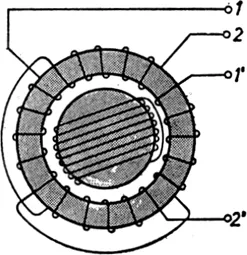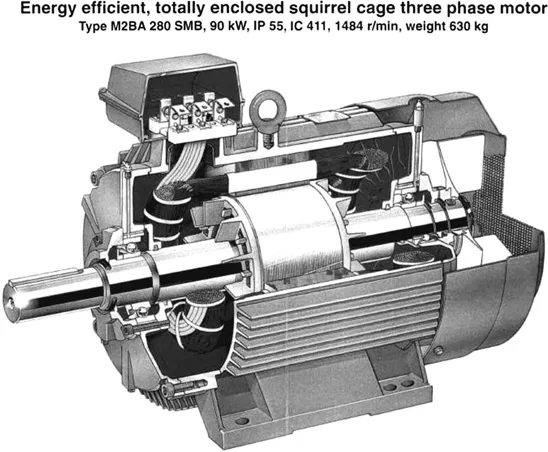
Induction Machines Handbook
Steady State Modeling and Performance
Ion Boldea
- 423 pages
- English
- ePUB (mobile friendly)
- Available on iOS & Android
Induction Machines Handbook
Steady State Modeling and Performance
Ion Boldea
About This Book
Induction Machines Handbook: Steady State Modeling and Performance offers a thorough treatment of steady-state induction machines (IM), the most used electric motor (generator) in rather constant or variable speed drives, forever lower energy consumption and higher productivity in basically all industries, from home appliances, through robotics to e-transport and wind energy conversion.
Chapter 1 offers a detailed introduction from fundamental principles to topological classifications and most important applications and power ranges from tens of W to tens of MW.
Then individual Chapters 2 and 4 deal in detail with specific issues, such as
-
- Magnetic, electric, and insulation materials
-
- Electric windings and their mmf
-
- Magnetization curve and inductance
-
- Leakage inductances and resistances
-
- Steady-state equivalent circuit and performance
-
- Starting and speed control methods
-
- Skin and on-load saturation effects
-
- Field harmonics, parasitic torques, radial forces, noise
-
- Losses
-
- Thermal modeling
-
- Single-phase induction machine basics
-
- Single-phase induction motors: steady-state modeling and performance
Fully revised and updated to reflect the last decade's progress in the field, this third edition adds new sections, such as
-
- Multiphase and multilayer tooth-wound coil windings
-
- The brushless doubly fed induction machine (BDFIM)
-
- Equivalent circuits for BDFIM
-
- Control principles for doubly fed IM
-
- Magnetic saturation effects on current and torque versus slip curves
-
- Rotor leakage reactance saturation
-
- Closed-slot IM saturation
-
- The origin of electromagnetic vibration by practical experience
-
- PM-assisted split-phase cage-rotor IM's steady state
The promise of renewable (hydro and wind) energy via cage-rotor and doubly fed variable speed generators e-transport propulsion and i-home appliances makes this third edition a state-of-the-art tool, conceived with numerous case studies and timely for both academia and industry.
Frequently asked questions
Information
1 Induction Machines
An Introduction
1.1 Electric Energy and Induction Motors
Variable Speed A.C. Drives Ratings
Power (kW) | 1–4 | 5–40 | 40–200 | 200–600 | >600 |
Percentage | 21 | 26 | 26 | 16 | 11 |
1.2 A Historical Touch



Table of contents
- Cover
- Half Title
- Series Page
- Title Page
- Copyright Page
- Dedication
- Table of Contents
- Preface
- Author
- Chapter 1 Induction Machines: An Introduction
- Chapter 2 Construction Aspects and Operation Principles
- Chapter 3 Magnetic, Electric, and Insulation Materials for IM
- Chapter 4 Induction Machine Windings and Their mmfs
- Chapter 5 The Magnetisation Curve and Inductance
- Chapter 6 Leakage Inductances and Resistances
- Chapter 7 Steady-State Equivalent Circuit and Performance
- Chapter 8 Starting and Speed Control Methods
- Chapter 9 Skin and On-Load Saturation Effects
- Chapter 10 Airgap Field Space Harmonics, Parasitic Torques, Radial Forces, and Noise Basics
- Chapter 11 Losses in Induction Machines
- Chapter 12 Thermal Modelling and Cooling
- Chapter 13 Single-Phase Induction Machines: The Basics
- Chapter 14 Single-Phase Induction Motors: Steady State
- Index